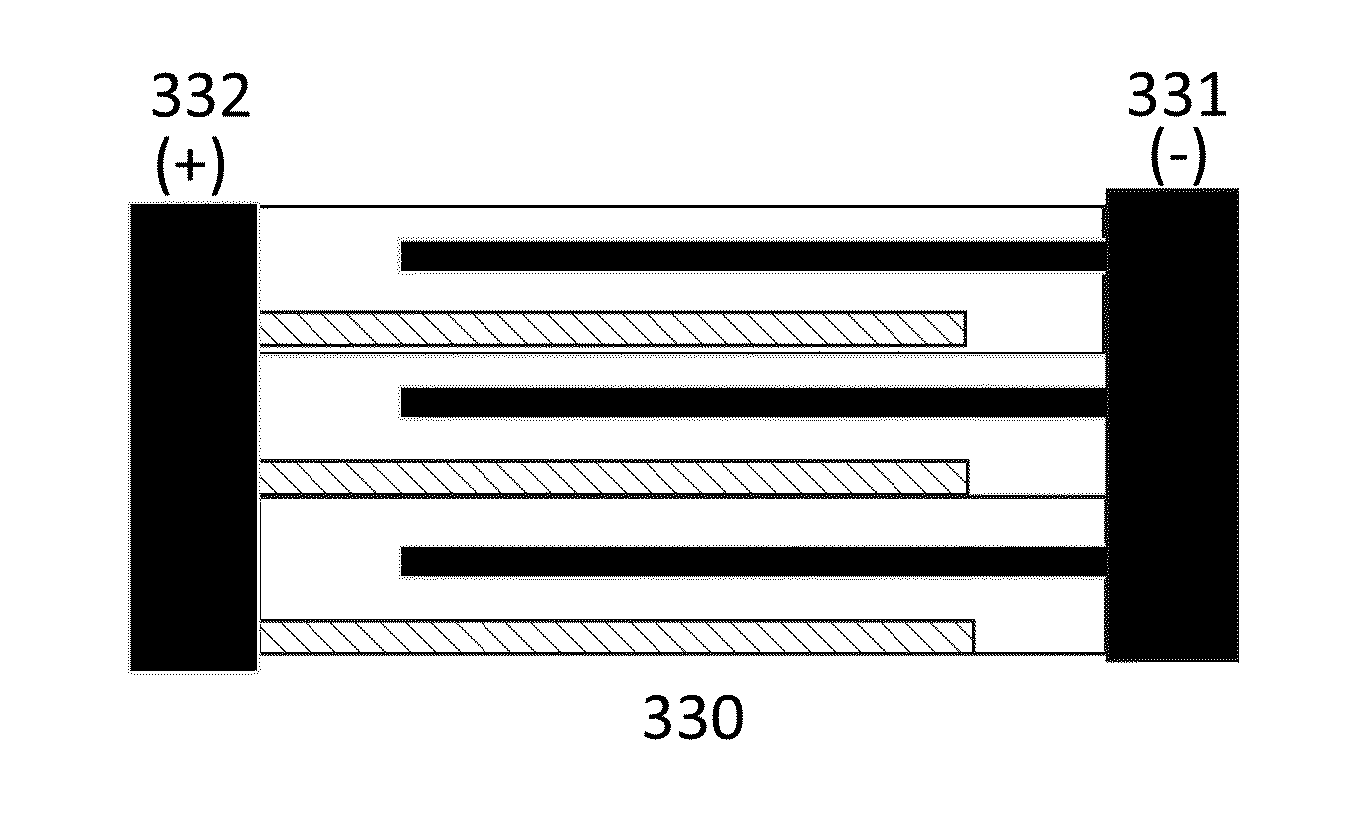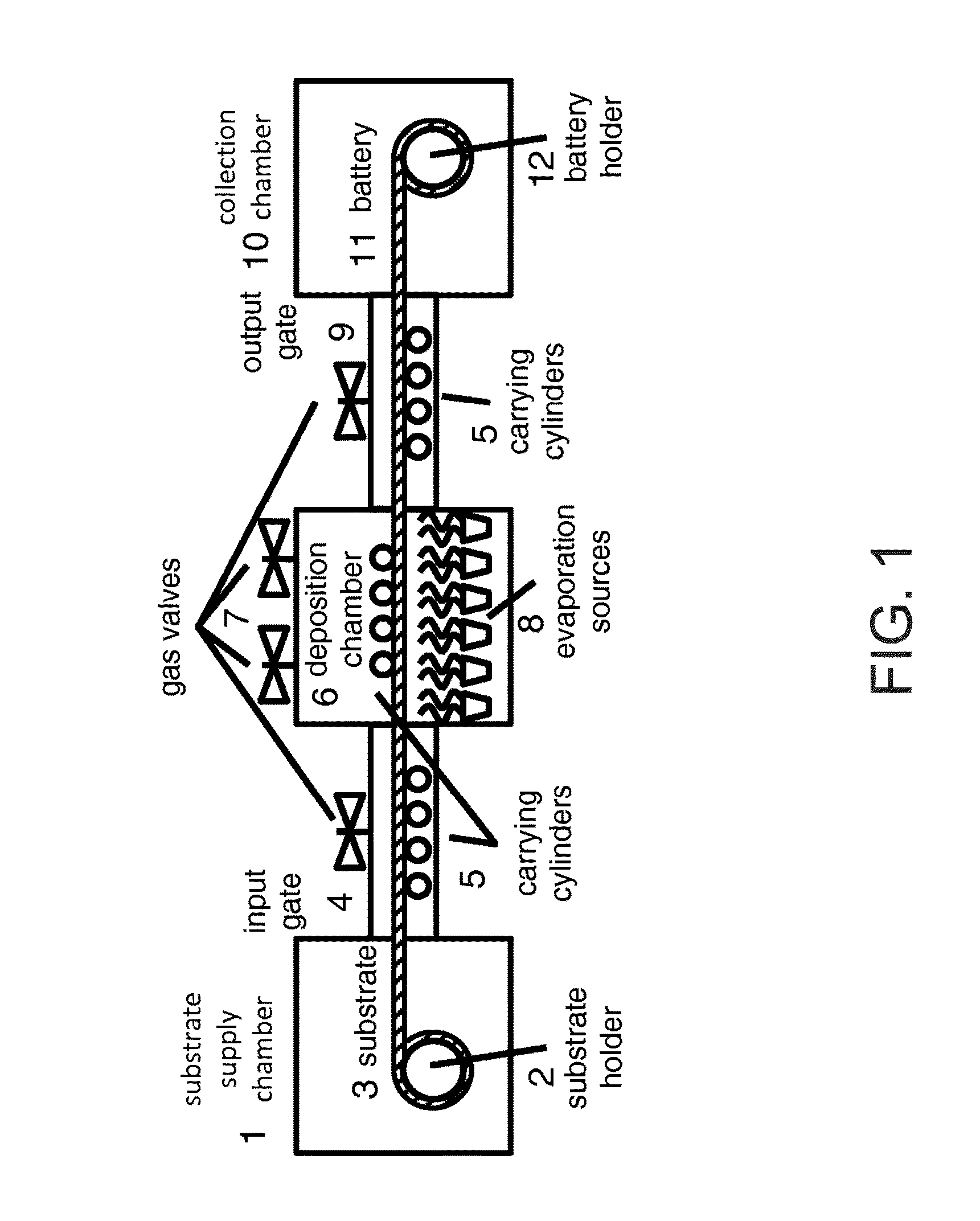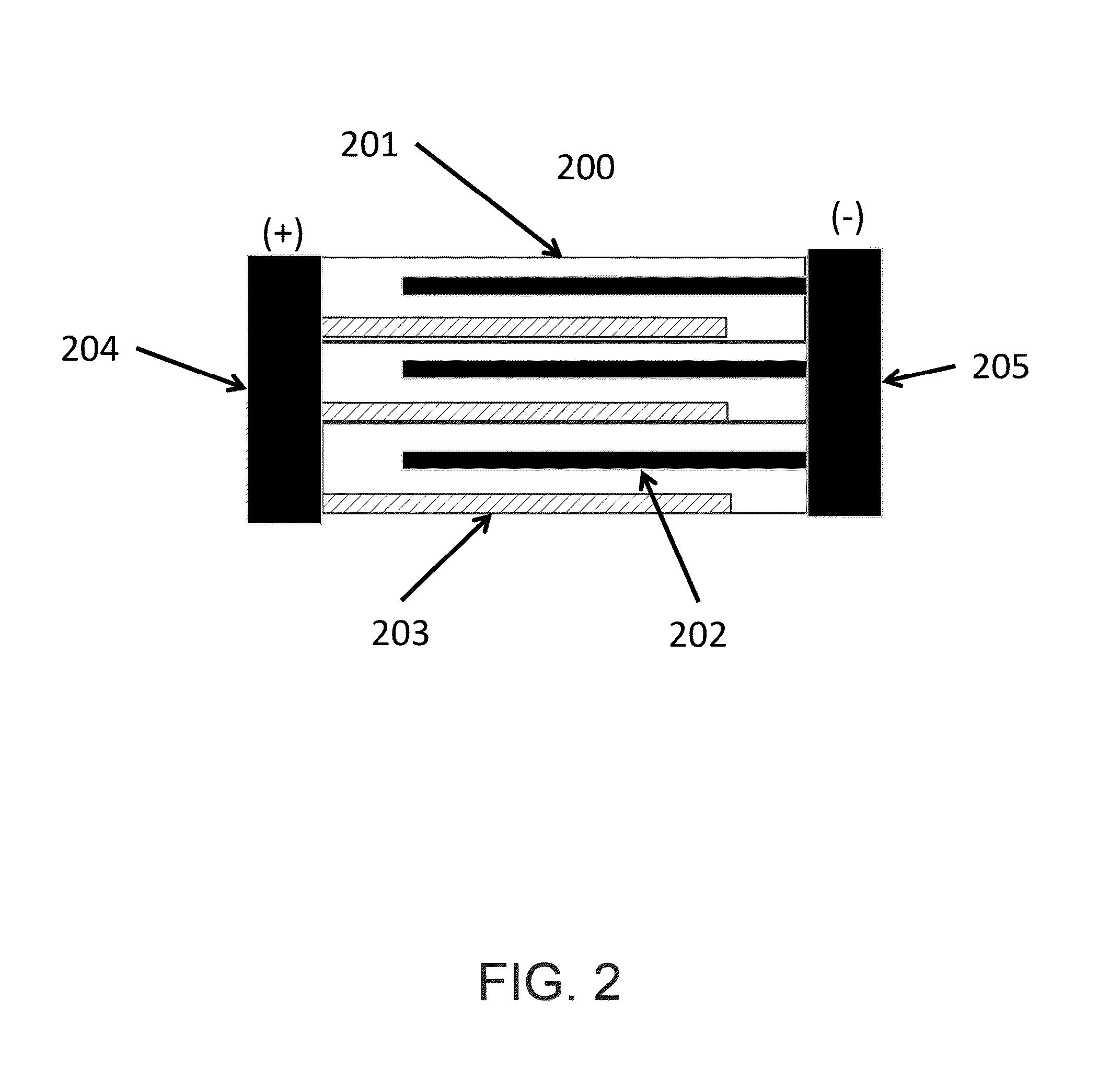Packaging and termination structure for a solid state battery
- Summary
- Abstract
- Description
- Claims
- Application Information
AI Technical Summary
Benefits of technology
Problems solved by technology
Method used
Image
Examples
example 1
Optimization of Battery Terminations in t1
[0071]This example demonstrates the process of determination the optimal t1. FIG. 12A is a simplified cross-sectional diagram of a battery device according to an embodiment of the present invention. FIG. 12(a) shows the t1, which is the distance between anode terminating current collector and cathode current collector. As an example of the problems encountered by the battery designer, if t1 is longer, more electrolyte material is added in this area and it increases non-active material and further lower volumetric energy density and capacity. As in this example, numerical simulations of the electrochemical cell model are conducted with different values of t1.
[0072]FIG. 12B is a graph of the relationship between volumetric energy density and thickness t1 according to an embodiment of the present invention. FIG. 12(b) shows the relationship between t1 and the battery volumetric energy density from the simulation result. The smaller t1, the high...
example 2
Forming the Terminations
[0073]FIG. 13 is a simplified perspective diagram of a battery device according to embodiment of the present invention. This example demonstrates the process of forming the termination layer. FIG. 13 shows the battery stack in zig-zag multilayer format as cells in parallel connection as 1301. Battery termination layer 1302 is deposited through spraying application. Other applications such brushing, rolling, dipping, and welding can be used too. Sprayed layer is then connected to the rivets insert through the substrate as shown in 1304 and tabs 1303 are attached to the battery from the bottom.
[0074]In an embodiment, the present invention includes a method for fabricating a solid state battery device comprising layers of anode, cathode, separator, electrolyte, current collectors, substrate, and overlaying barrier material, with an inter-digitated layer structure configured with a post terminated lead structure. The method can include:[0075]forming a plurality o...
PUM
| Property | Measurement | Unit |
|---|---|---|
| Length | aaaaa | aaaaa |
| Energy density | aaaaa | aaaaa |
Abstract
Description
Claims
Application Information
 Login to View More
Login to View More - R&D
- Intellectual Property
- Life Sciences
- Materials
- Tech Scout
- Unparalleled Data Quality
- Higher Quality Content
- 60% Fewer Hallucinations
Browse by: Latest US Patents, China's latest patents, Technical Efficacy Thesaurus, Application Domain, Technology Topic, Popular Technical Reports.
© 2025 PatSnap. All rights reserved.Legal|Privacy policy|Modern Slavery Act Transparency Statement|Sitemap|About US| Contact US: help@patsnap.com



